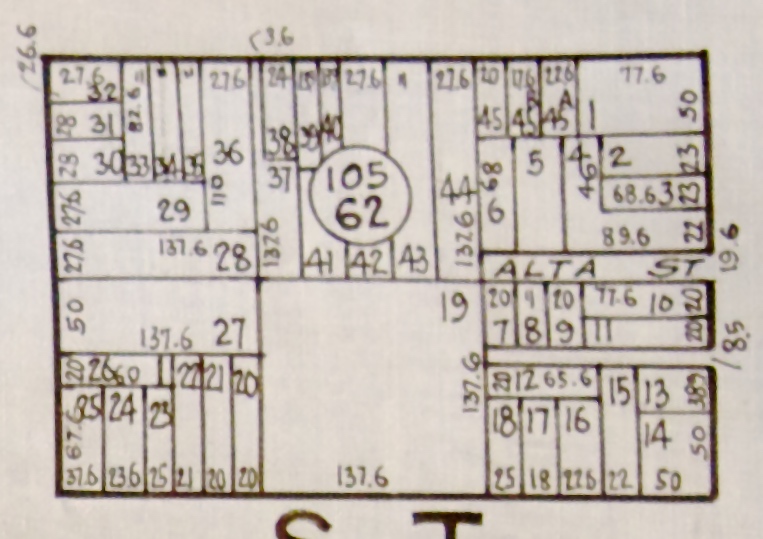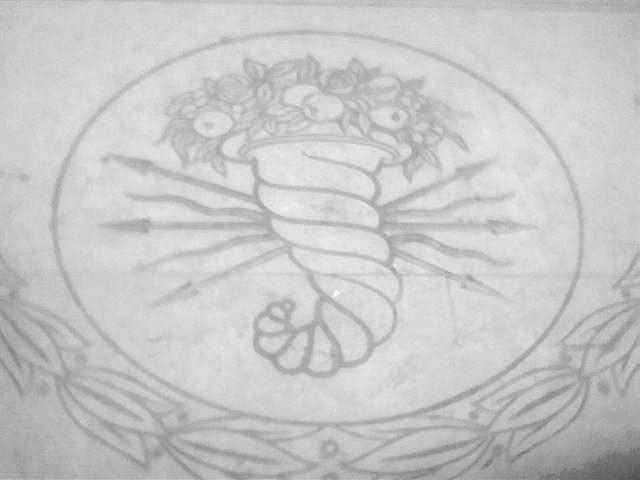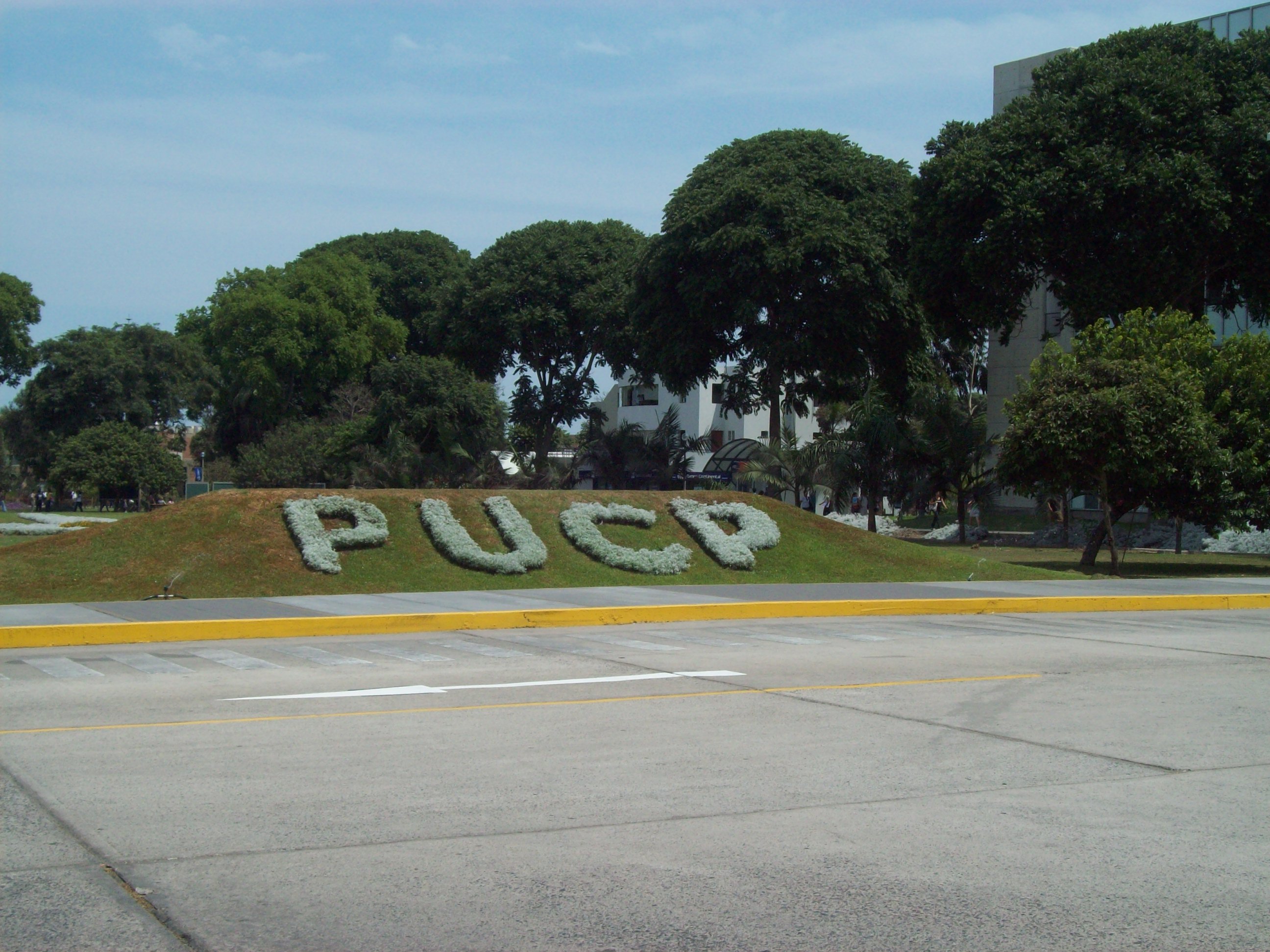|
Church Of Our Lady Of The Forsaken, Lima
The Church of Our Lady of the Forsaken and of Saint Joseph (), known commonly as the Church of the Forsaken (), is a Catholic church located between Venezuela Avenue and the Jirón Recuay of the main square of Breña, in Lima, Peru. The current building is the successor of the church built between 1669 and 1671, formerly located at the first block of Jirón Áncash until its demolition in 1937 to make way for the construction of posterior garden of the new Government Palace. History Original building (1671–1937) The original building was built between 1669 and 1671, under the reign of the Count of Lemos, then Viceroy of Peru. Owned by the Jesuits, its first stone was placed in 1669, with its construction being carried out under Manuel de Escobar ( Cajatambo; 1640 — Lima; 1695), ''alarife'' of Lima. According to writer Antonia Duran, its history dates back to the request for the construction of a chapel dedicated to Our Lady of the Forsaken made by Valencian merchant ... [...More Info...] [...Related Items...] OR: [Wikipedia] [Google] [Baidu] |
Catholic
The Catholic Church (), also known as the Roman Catholic Church, is the List of Christian denominations by number of members, largest Christian church, with 1.27 to 1.41 billion baptized Catholics Catholic Church by country, worldwide as of 2025. It is among the world's oldest and largest international institutions and has played a prominent role in the history and development of Western civilization.Gerald O'Collins, O'Collins, p. v (preface). The church consists of 24 Catholic particular churches and liturgical rites#Churches, ''sui iuris'' (autonomous) churches, including the Latin Church and 23 Eastern Catholic Churches, which comprise almost 3,500 dioceses and Eparchy, eparchies List of Catholic dioceses (structured view), around the world, each overseen by one or more Bishops in the Catholic Church, bishops. The pope, who is the bishop of Rome, is the Papal supremacy, chief pastor of the church. The core beliefs of Catholicism are found in the Nicene Creed. The ... [...More Info...] [...Related Items...] OR: [Wikipedia] [Google] [Baidu] |
Cajatambo
Cajatambo or Kashatampu is the capital of the Cajatambo Province in the Lima Region of Peru. History Founded during the Tawantinsuyu (Inca Empire) before the advent of the Spanish conquistadors, with the name of ''Kasha Tanpu'', it was one of the stops along the Inca highway, being part of the imperial region of Chinchay Suyu. Demography The population of Cajatambo was estimated in 1896 to be roughly 6,000 people, although roughly 15 years later the ''Encyclopædia Britannica'' Eleventh Edition put the population at closer to 4,500. In recent decades many people have migrated to places with better opportunities and services, such as the city of Lima. Spanish is the language which the majority of the population (80%) learnt to speak in childhood, followed by Quechua (19%). The variety of Quechua spoken in the area is the Cajatambo Quechua (part of the Central Quechua "Wankay"), a Quechua I dialect which shares 74% intelligibility with the neighboring Huamalies Quechua. ... [...More Info...] [...Related Items...] OR: [Wikipedia] [Google] [Baidu] |
Basilica And Convent Of San Pedro, Lima
The Basilica and Convent of Saint Peter (), formerly known as Basilica of Saint Paul () after the school of the same name, is a Catholic church located in the historic centre of Lima, Peru. History Completed in 1638 as part of the former College of Saint Paul (), it is administered by the Jesuits and it was created Basilica as part of the Archdiocese of Lima. In this church, Sacred Heart of Jesus is venerated. Among those interred within the church is the Viceroy of Peru (1796-1801) Ambrosio O'Higgins. The heart of Pedro Antonio Fernández de Castro, 10th Count of Lemos, also a Viceroy of Peru (1667-1672), is located inside the church. It was originally located at the Church of Our Lady of the Forsaken (demolished in 1937), which was the Count's favourite, as he would be commonly seen sweeping the street outside the church with a broom despite his office. On 16 March 2018 the basilica hosted the royal wedding of Prince Christian of Hanover to Alessandra de Osma. See also * ... [...More Info...] [...Related Items...] OR: [Wikipedia] [Google] [Baidu] |
Heart
The heart is a muscular Organ (biology), organ found in humans and other animals. This organ pumps blood through the blood vessels. The heart and blood vessels together make the circulatory system. The pumped blood carries oxygen and nutrients to the tissue, while carrying metabolic waste such as carbon dioxide to the lungs. In humans, the heart is approximately the size of a closed fist and is located between the lungs, in the middle compartment of the thorax, chest, called the mediastinum. In humans, the heart is divided into four chambers: upper left and right Atrium (heart), atria and lower left and right Ventricle (heart), ventricles. Commonly, the right atrium and ventricle are referred together as the right heart and their left counterparts as the left heart. In a healthy heart, blood flows one way through the heart due to heart valves, which prevent cardiac regurgitation, backflow. The heart is enclosed in a protective sac, the pericardium, which also contains a sma ... [...More Info...] [...Related Items...] OR: [Wikipedia] [Google] [Baidu] |
Universidad Nacional Mayor De San Marcos
The National University of San Marcos (, UNMSM) is a public research university located in Lima, the capital of Peru. In the Americas, it is the first officially established ( privilege by Charles V, Holy Roman Emperor) and the oldest continuously operating university. The university started in the general studies that were offered in the convent of the Rosario of the order of Santo Domingo—the current Basilica and Convent of Santo Domingo—in around 1548. Its official foundation was conceived by Fray Thomas de San Martín on May 12, 1551; with the decree of Emperor Charles I of Spain and V of the Holy Roman Empire. In 1571, it acquired the degree of pontifical granted by Pope Pius V, with which it ended up being named the "Royal and Pontifical University of the City of the Kings of Lima". It is also referred to as the "University of Lima" throughout the Viceroyalty. Throughout its history, the university had a total of four colleges under tutelage: the Colegio Real y M ... [...More Info...] [...Related Items...] OR: [Wikipedia] [Google] [Baidu] |
Broom
A broom (also known as a broomstick) is a cleaning tool, consisting of usually stiff fibers (often made of materials such as plastic, hair, or corn husks) attached to, and roughly parallel to, a cylindrical handle, the broomstick. It is thus a variety of brush with a long handle. It is commonly used in combination with a dustpan. A distinction is made between a "hard broom" and a "soft broom" and a spectrum in between. Soft brooms are used in some cultures chiefly for sweeping walls of cobwebs and spiders, like a " feather duster", while hard brooms are for rougher tasks like sweeping dirt off sidewalks or concrete floors, or even smoothing and texturing wet concrete. The majority of brooms are somewhere in between, suitable for sweeping the floors of homes and businesses, soft enough to be flexible and to move even light dust, but stiff enough to achieve a firm sweeping action. The broom is also a symbolic object associated with witchcraft and ceremonial magic. Etymology ... [...More Info...] [...Related Items...] OR: [Wikipedia] [Google] [Baidu] |
Sacristy
A sacristy, also known as a vestry or preparation room, is a room in Christianity, Christian churches for the keeping of vestments (such as the alb and chasuble) and other church furnishings, sacred vessels, and parish records. The sacristy is usually located inside the Church (building), church, but in some cases it is an annex or separate building (as in some monastery, monasteries). In most older churches, a sacristy is near a side altar, or more usually behind or on a side of the high altar, main altar. In newer churches the sacristy is often in another location, such as near the entrances to the church. Some churches have more than one sacristy, each of which will have a specific function. Often additional sacristies are used for maintaining the church and its items, such as candles and other materials. Description The sacristy is also where the priest and attendants vest and prepare before the Church service, service. They will return there at the end of the service to r ... [...More Info...] [...Related Items...] OR: [Wikipedia] [Google] [Baidu] |
Chapel
A chapel (from , a diminutive of ''cappa'', meaning "little cape") is a Christianity, Christian place of prayer and worship that is usually relatively small. The term has several meanings. First, smaller spaces inside a church that have their own altar are often called chapels; the Lady chapel is a common type of these. Second, a chapel is a place of worship, sometimes Interfaith worship spaces, interfaith, that is part of a building, complex, or vessel with some other main purpose, such as a school, college, hospital, palace or large aristocratic house, castle, barracks, prison, funeral home, hotel, airport, or military or commercial ship. Third, chapels are small places of worship, built as satellite sites by a church or monastery, for example in remote areas; these are often called a chapel of ease. A feature of all these types is that often no clergy are permanently resident or specifically attached to the chapel. For historical reasons, ''chapel'' is also often the term u ... [...More Info...] [...Related Items...] OR: [Wikipedia] [Google] [Baidu] |
Vara (unit)
There are a number of Spanish units of measurement of length or area that are virtually obsolete due to metrication. They include the vara, the cordel, the league and the labor. The units of area used to express the area of land are still encountered in some transactions in land today. (unit of length) A (meaning "rod" or "pole", abbreviation: var) is an old Spanish unit of length. Varas are a surveying unit that appear in many deeds in the southern United States due to the land previously being part of Mexico, and becoming part of the United States under the Treaty of Guadalupe Hidalgo. Varas were also used in many parts of Latin America. It varied in size at various times and places; the Spanish unit was set at about in 1801. In Argentina, the vara measured about , and typical urban lots are wide (10 Argentine varas). At some time a value of was adopted in California. In Texas, a was defined as , or 1 yard = 1.08 . The and the corresponding unit of area, the squ ... [...More Info...] [...Related Items...] OR: [Wikipedia] [Google] [Baidu] |
Cabildo Of Lima
The Cabildo of Lima () was the governing body of Lima and, since 1874, its intendancy. It was created four days after the creation of the city in 1535, existing until its suppression during the independence of Peru in 1821. It was headed by the ''Alcalde Ordinario''. History Created on January 22, 1535, the foundation of the city and the constitution of the municipal government was confirmed almost a year later, by the ''Real Cédula'' of December 7, 1535. Its functions were administrative, judicial and economic. At the administrative level, it was in charge of presiding over public shows, supervising the cleanliness of the city, organizing the reception of the viceroys, taking care of the decoration of the streets and low-level police. As for judicial cases, they administered justice in the first instance and were in charge of the security police. Among the economic functions, the fixing of food prices and the control of the entry into the city of the necessary merchandise and t ... [...More Info...] [...Related Items...] OR: [Wikipedia] [Google] [Baidu] |
Valencia
Valencia ( , ), formally València (), is the capital of the Province of Valencia, province and Autonomous communities of Spain, autonomous community of Valencian Community, the same name in Spain. It is located on the banks of the Turia (river), Turia, on the east coast of the Iberian Peninsula on the Mediterranean Sea. It is the Ranked lists of Spanish municipalities, third-most populated municipality in the country, with 825,948 inhabitants. The urban area of Valencia has 1.5 million people while the metropolitan region has 2.5 million. Valencia was founded as a Roman Republic, Roman colony in 138 BC as '. As an autonomous city in late antiquity, its militarization followed the onset of the threat posed by the Spania, Byzantine presence to the South, together with effective integration to the Visigothic Kingdom of Toledo in the late 6th century. Al-Andalus, Islamic rule and acculturation ensued in the 8th century, together with the introduction of new irrigation syst ... [...More Info...] [...Related Items...] OR: [Wikipedia] [Google] [Baidu] |
Blog PUCP
Pontifical Catholic University of Peru (, PUCP) is a private university in Lima, Peru. It was founded in 1917 with the support and approval of the Catholic church, being the oldest private institution of higher learning in the country. The Peruvian historian and politician José de la Riva-Agüero y Osma would become his main benefactor by leaving him most of his assets as an inheritance, as it was then a more religious educational institution and linked to the Catholic Church; in contrast to his alma mater and original destination of his inheritance, the National University of San Marcos, where Riva-Agüero considered that liberal ideas and atheism predominated here. In July 2012, after an apostolic visitation, begun earlier, in 2011, by Peter Erdo, Archbishop of Esztergom-Budapest, Hungary, the Holy See withdrew from the university the right under canon law to use the titles ''Catholic'' and ''Pontifical'' in its name. Archbishop of Lima, Juan Luis Cipriani, was the main ad ... [...More Info...] [...Related Items...] OR: [Wikipedia] [Google] [Baidu] |







